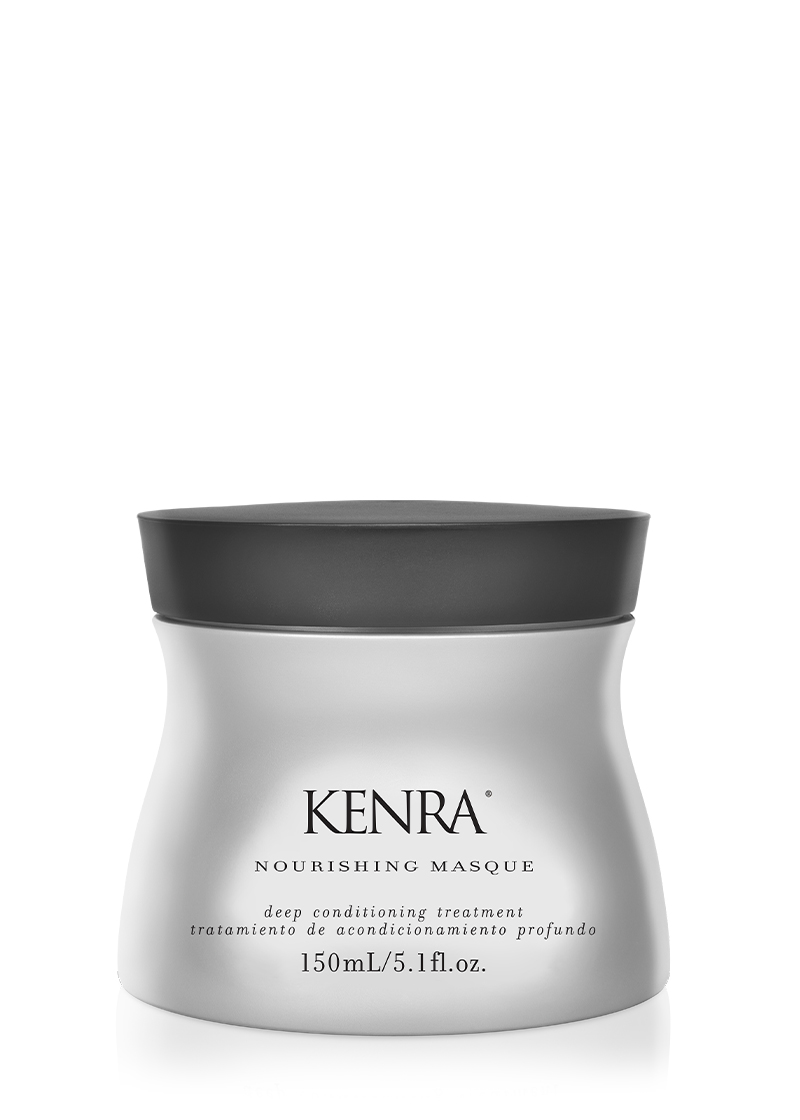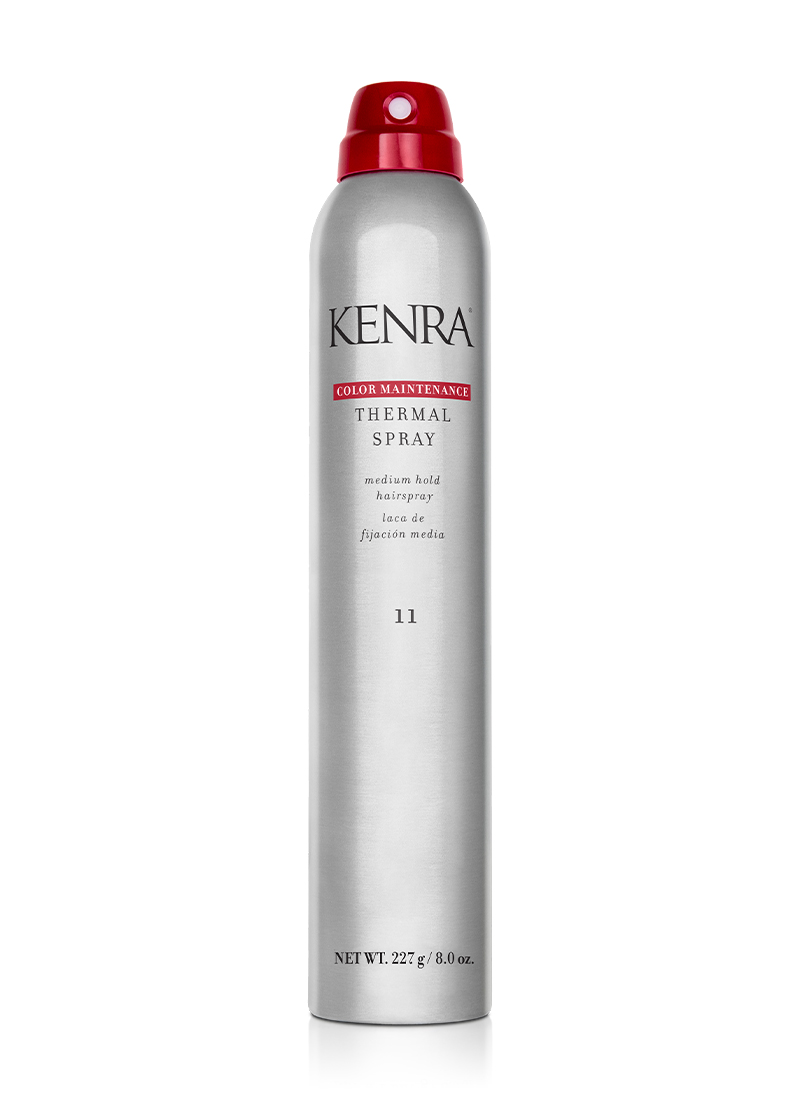Can Heat Damaged Hair Be Revived?

By: Kenra Professional
If you are concerned that your hair may have accrued some heat damage over the years, stay calm and do not stress because you are not alone. The truth is that hair is naturally vulnerable to the effects of heat. In fact, hair is naturally vulnerable to most things!
Understanding your hair’s health comes down to, quite literally, knowing your roots. The inner hair cuticles on your scalp form from dead cells that overlap in layers and create scales for protecting the hair shaft.
When hair is exposed to excessive heat, the structure of this shaft can be manipulated, thus damaging the protective scales that keep the hair strands together. This increases the chances of the scales falling apart and the hair losing its protective layer.
The good news is that, despite what you may have previously been told, it is never too late to revive your hair. There are multiple easy and effective ways to restore your hair back to its beautiful, healthy self and to actively protect it against thermal damage. Keep reading if you want to know how.
Identifying Damaged Hair
You know your hair better than anyone, so it is likely that you will be able to notice and locate heat damage on your own. In the instance that you could benefit from a little guidance, here are some of the most common signs of damage in hair:
- Breakage
- Split ends
- Change in texture
- Frequent knotting
- Lack of definitio
- Frizz
- Decrease in volume
- Dryness
- Lack of elasticity
If you want a second opinion, it never hurts to visit your local salon for a consultation with a professional stylist to discuss the status of your hair. While there, you can also go over personalized techniques and methods for repairing your hair.
Straight to the Source
If you are struggling with heat-damaged hair, you might be wondering where these afflictions are coming from. Here are three of the most common causes of heat damage.
1. Chemicals
The chemicals found in products used during hair treatments, though safe for your hair, can do more harm than good if not used in moderation. One of the clearest examples of this is the products involved in coloring one’s hair.
Getting your hair colored typically involves the use of hair-lightening products which commonly contain bleach. Bleach is extremely effective for removing pigment but does heat up as the chemicals are activated and can potentially break apart your hair’s protein in the process.
This should not discourage you from trying that new hair color you’ve been interested in, but rather should stop you from getting treatments done too often or coloring your hair on your own.
It is not the chemicals themselves that can cause heat damage but rather the frequency at which you expose your hair to them. If you have undergone numerous different hair treatments involving chemicals at one time or have had touch-ups in very close proximity to one another, chances are that your heat-induced hair damage is due to chemicals.
2. Styling Tools
The most commonly used styling tools rely on the application of heat to work effectively. Similar to our discussion about chemicals, it is not the general use of these tools that can cause damage but rather how often they are used and the temperature of the heat applied.
The way that heated styling tools work is that they break down the hydrogen bonds that form between the keratin proteins in each strand of hair. This allows us to alter our hair’s texture and style it however we like, such as by using a flat iron to straighten naturally curly hair. While useful for styling, this process can strip the hair of its natural oils and proteins.
Therefore, the frequent use of these tools can make your hair weaker, dryer, and more prone to breakage. If you are using styling tools on a daily basis, it is likely that this is the cause of your hair’s thermal damage.
3. Environment
Unprotected exposure to some of the environment’s natural elements can actually cause heat damage. The first and more obvious perpetrator is the sun. UV radiation from the sun can dry out your hair and cause discoloration, particularly for people with recently bleached or colored hair.
The second more unsuspecting perpetrator is the wind. Even without heat, wind can cause damage by knotting your hair. This can lead to breakage during detangling if done incorrectly. In terms of thermal damage, however, dry, hot winds can remove moisture from the scalp and wear away at your hair cuticles.
If you’ve been spending a lot of time outdoors, you may not have even realized that your hair required protection and, therefore, could have amassed some heat damage from your environment.
Reviving Your Hair
Get a Haircut
Sometimes getting your hair back to where it needs to be means hitting that refresh button. Getting your hair cut is the perfect way to do this! If your hair is extremely damaged, you may be advised by your stylist to go for a more drastic cut, but in most instances, you can get away with a simple trim.
Removing any heat-induced breakage, particularly split ends, that can end up splitting the strand all the way up to your root if untreated, will rid you of the most obvious effects of thermal damage and give your hair the fresh start it deserves.
Use a Hair Mask
To improve the health of your heat-damaged hair you can try your hand at a hair mask. Hair masks are designed to nourish and hydrate hair, which is perfect for your potentially dried-out locks. There are several DIY hair masks that you can make at home, but if you are looking for something that requires less effort with more professional results, we recommend trying the Kenra Nourishing Masque. This product is specially designed to replenish moisture and rejuvenate damaged hair.
Try a Deep Conditioner
One of the peskiest effects of heat damage is your hair’s lack of moisture because it can lead to broader consequences like the changing of one’s hair texture and a loss of definition.
To improve your damaged hair’s levels of moisture, you can introduce a deep conditioner to your hair routine. Deep conditioners restore your hair’s natural oils, similarly to the standard conditioner, except that they produce longer-lasting results. Extremely dry and damaged hair can be deep conditioned weekly, but adjustments should be made if necessary.
Tips for Future Prevention
Preventative action is also important for the healing process. Here are some tips for preventing future damage that can be used both while you are in the process of reviving your hair (to provide it with the necessary time to heal) and after your hair is back to its beautiful healthy self so that you can maintain the well-earned effects of all your effort!
Space Things Out
As previously mentioned, too much exposure to harsh chemicals in a short amount of time can cause serious thermal damage to your hair. Instead of dropping hair treatments altogether, space out your salon appointments so that your hair has the time to heal between each one.
Try to only have one appointment at a time and wait several weeks before your next touch-up to maintain your hair’s health as it undergoes different changes.
Turn Down the Heat
The best way to prevent thermal damage from heat styling tools is to cut down on the amount of time you use them. Reducing your use of these appliances by even just one day a week can make a difference.
You can also try turning down the heat settings on your appliances so that you are not exposing your hair to such harsh temperatures.
If these are not viable options for you, implement a heat protectant into your routine to reduce damage. Heat protectants form a thin film on the hair’s surface that helps to distribute heat more evenly and gradually.
This thermal protection can also be useful for protecting against the aforementioned UV rays and dry winds you might deal with on a daily basis. Another reason for heat protectants to be considered a great option for you is because there is so much variety on the market and you can find the perfect fit for your specific needs.
For example, there are protectants for finishing styled hair, blow-drying safely, protecting hair that is already dry, and hair that is in need of color maintenance.
Hair Revival Is Possible
In conclusion, if your hair has fallen victim to heat damage, there is hope on the horizon! There are loads of easy ways to get your hair healthy and back on track. Start by assessing the damage and then finding the source.
Once you know where and why your hair is struggling, you can take action, whether that means a visit to the salon or trying out a new product or two. Find the solutions that work best for you and get ready to relish in your newly revived luscious locks!
Sources:
Healthy hair: what is it? | PubMed
How Does Heat Styling Hair Work and Why Is My Hair the Way It Is? | SiOWfa12: Science in Our World | PSU
7 DIY Hair Masks - Recipes for At-Home Hair Masks | Good Housekeeping


